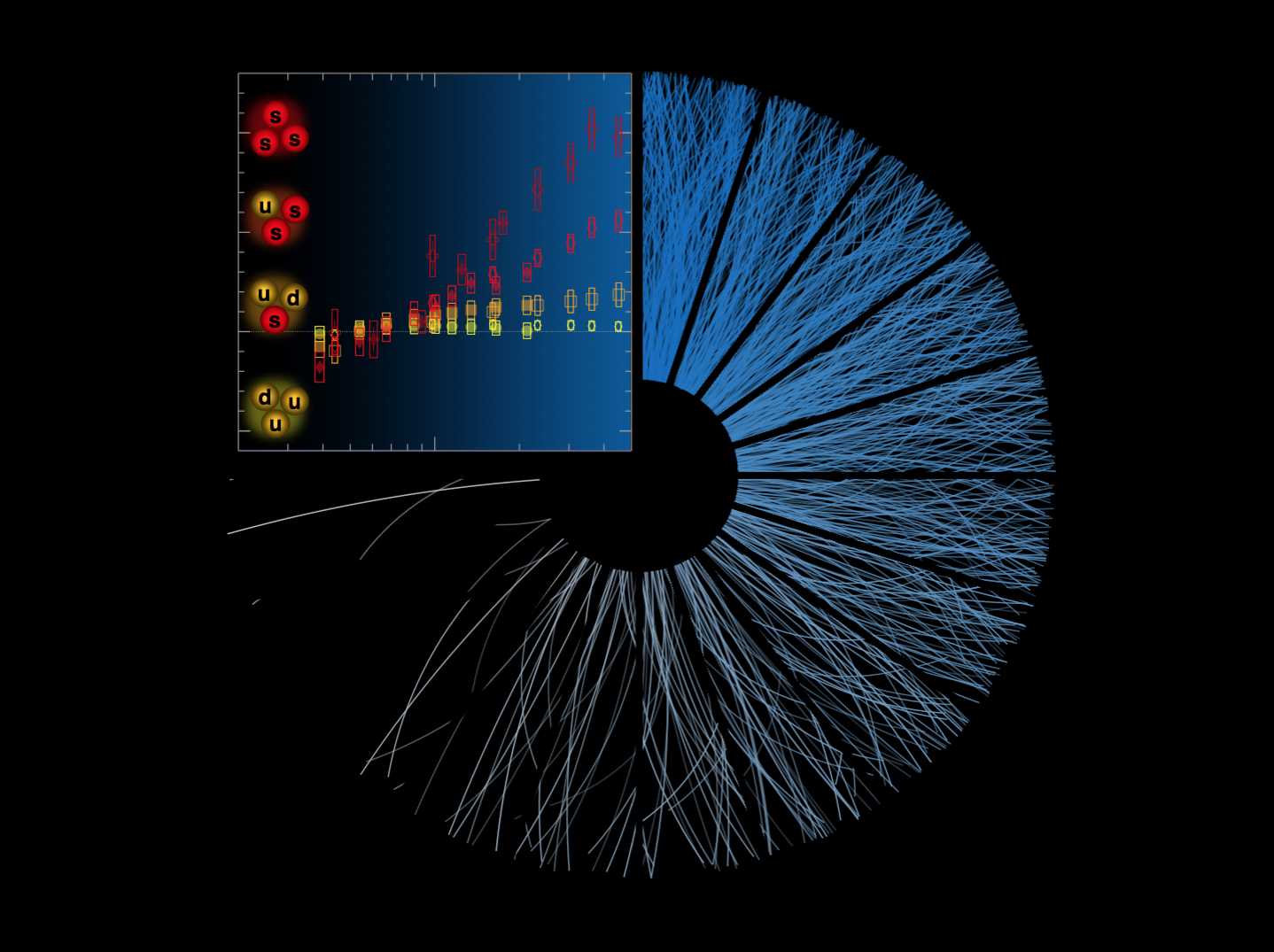In a paper published on 24 April 2017 in Nature Physics, the ALICE collaboration reports that proton collisions sometimes present similar patterns to those observed in collisions of heavy nuclei. This behaviour was spotted through observation of so-called strange hadrons in certain proton collisions in which a large number of particles are created, using the 7 TeV proton collision data from LHC run 1.
Strange hadrons are well-known particles with names names such as Kaon, Lambda, Xi and Omega, all containing at least one strange quark. The observed ‘enhanced production of strange particles’ is a familiar feature of quark-gluon plasma, a very hot and dense state of matter that existed just a few millionths of a second after the Big Bang, and is commonly created in collisions of heavy nuclei. But it is the first time ever that such a phenomenon – the enhanced production of strange particles – is unambiguously observed in the rare proton collisions in which many particles are created. This result is likely to challenge existing theoretical models that do not predict an increase of strange particles in these events.
The study of the quark-gluon plasma provides a way to investigate the properties of the strong interaction, one of the four known fundamental forces. The quark-gluon plasma is produced at very high temperature and energy density, when ordinary matter undergoes a transition to a phase in which quarks and gluons become ‘free’ and are thus no longer confined within hadrons. These conditions can be obtained at the Large Hadron Collider by colliding heavy nuclei at high energy.
Before this study, enhanced strangeness production has been observed only in collisions of heavy nuclei, and it is considered as a manifestation of quark-gluon plasma. ALICE’s result indicates that this phenomenon may now have been observed within proton-proton collisions as well.
The new results also show that the production rate of these strange hadrons increases with the ‘multiplicity’ – the number of particles produced in a given collision – faster than that of other particles generated in the same collision. In addition, data show that the higher the number of strange quarks contained in the induced hadron, the stronger is the increase of its production rate. No dependence on the collision energy or the mass of the generated particles is observed, demonstrating that the observed phenomenon is related to the strange quark content of the particles produced.
“We are very excited about this discovery,” said Federico Antinori, Spokesperson of the ALICE collaboration. “We are again learning a lot about this primordial state of matter. Being able to isolate the quark-gluon-plasma-like phenomena in a smaller and simpler system, such as the collision between two protons, opens up an entirely new dimension for the study of the properties of the fundamental state that our universe emerged from.”

